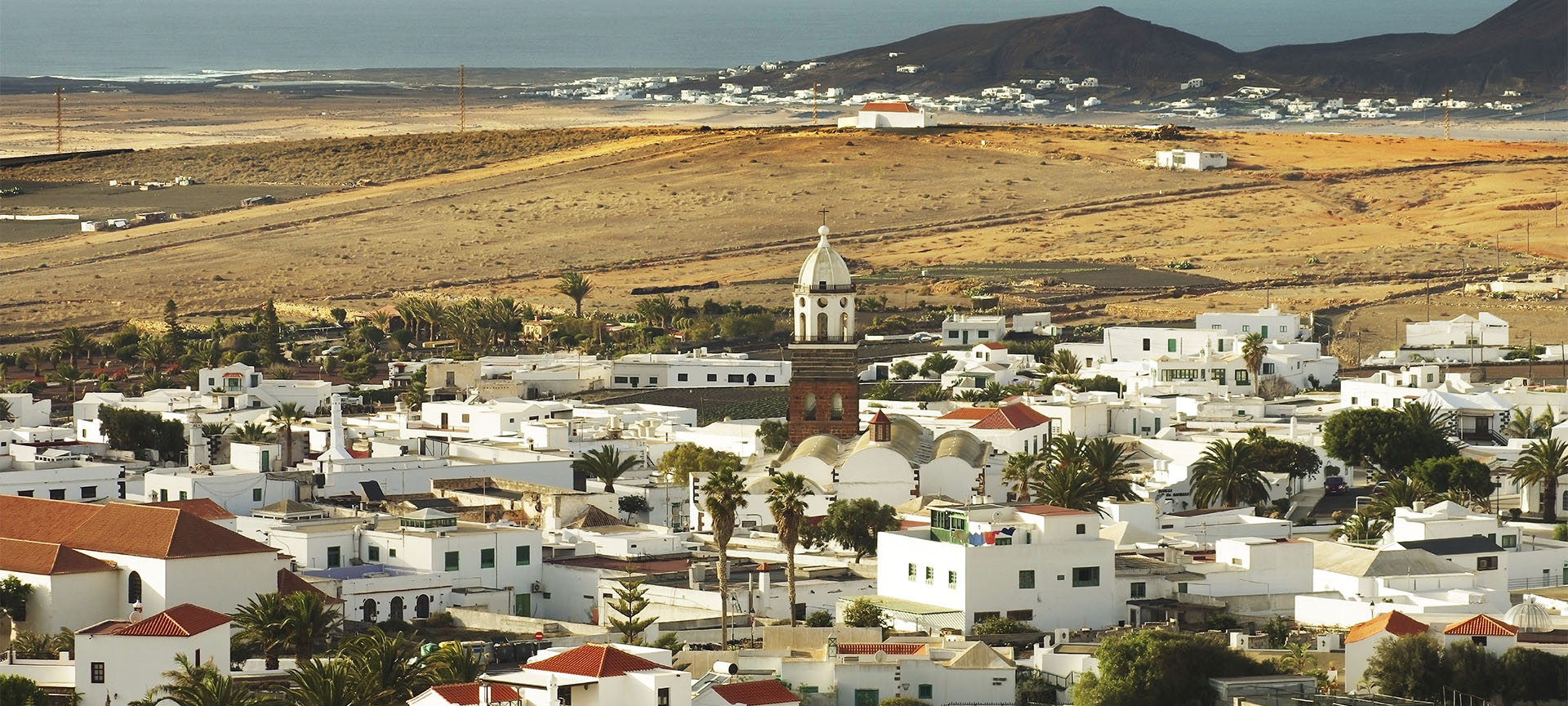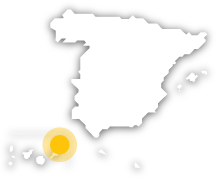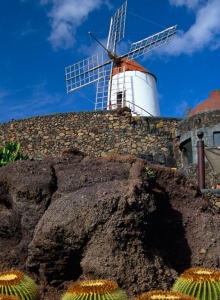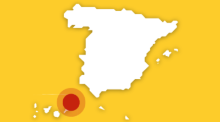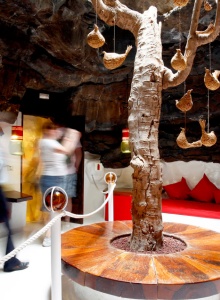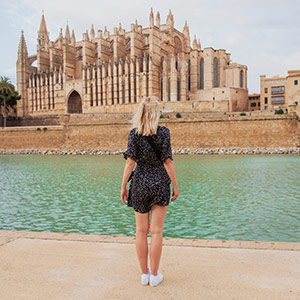Teguise, the former capital of the island of Lanzarote, is set within the incredible volcanic landscape formed by ancient craters and rivers of solidified lava. Much of the island's history is reflected in its historic center, a whitewashed hamlet where beautiful examples of popular and noble architecture meet.
Deeply marked by the imprint that Lanzarote architect César Manrique left on the island, Teguise preserves two of his main creations: the Cactus Garden and the foundation that bears his name, which was also the artist's former residence. All this is complemented by the beautiful beaches of Famara and Costa Teguise, the latter of which has become one of the island's main tourist attractions.
Teguise has a past that is intricately entwined with the history of the Canary Islands, as it was one of the first urban centres to emerge in the archipelago.Its historic centre, a neat whitewashed hamlet of cobbled streets, is set amidst an unusual landscape of extinguished craters and vast plains of dark volcanic earth.Its former status as the island's capital is reflected in the form of a valuable legacy of noble architecture and white houses featuring elements of local tradition, such as the typical wooden balconies.In the heart of the town centre you can find some of the most important historical buildings on the island, such as Spinola Palace and the convents of Santo Domingo and San Francisco. And very close by, next to the extinct volcano of Guanapay, stands the Castle of Santa Bárbara, restored and fitted out as the Museum of the Emigrant.As is true of other parts of the island, Teguise has been deeply marked by the work of César Manrique.The legacy of César ManriqueIn the area known as Taro de Tahíche lies the César Manrique Foundation, which was once the residence of the brilliant Lanzarote architect. This is an original museum where, in addition to an interesting collection of contemporary art, visitors can admire the unusual way in which the building's architecture blends in with the surrounding volcanic landscape.Also located within the municipality is the Cactus Garden, which opened in 1991 and was the artist's final architectural work. Overlooked by an old grain mill, this unique space combines original stone shapes with its status as a botanical garden, as it is home to nearly 1,400 different species of cactus.In the coastal area, Teguise has excellent infrastructures geared towards tourism. Costa Teguise, one of the main centres of the island, has a wide variety of hotels, residential areas, shops and restaurants. Some of its beaches, especially Las Cucharas, are known for their excellent conditions for windsurfing.This panorama contrasts with the wild beauty of Famara Beach in the west of Lanzarote, a true paradise for surfers.Surroundings and gastronomy From the old island capital you can embark on interesting tours of the surrounding area. In the north of the island is Haría, a small village nestled in a fertile valley between mountains. In its coastal area we can find Jameos del Agua, an original complex that makes use of a volcanic tunnel, as well as the Cueva de los Verdes cave and the Mirador del Río viewpoint. Other nearby municipalities include Tinajo, where the Virgen de los Dolores, patron saint of the island, is venerated in the sanctuary of Mancha Blanca, and San Bartolomé, whose monumental heritage includes the Casa del Mayor Guerra and the Casa Ajei. In the southwest of the island is Timanfaya National Park, a veritable showcase of the island's volcanic ecosystem. The visit includes an excursion by coach along the Ruta de los Volcanes tour route, which starts at the visitor centre. Timanfaya National Park is located within Los Volcanes Natural Park, where fields of volcanic ash and lava extend all the way to the coast. As for the gastronomy of Lanzarote, you can try specialities such as ranchos (a typical pork stew) and the famous papas arrugadas (potatoes boiled with salt), which are served accompanied by various types of mojos (sauces). The sea supplies Lanzarote tables with excellent fish, such as “vieja” stewed or grilled, Atlantic wreckfish and corvina, and fresh shellfish. When it comes to desserts, the country's cheeses, both soft and cured, are particularly popular. The island boasts magnificent crops of Malvasía grapes, which produce full-bodied white wines, exquisite sweet wines and crianza wines, all of which are labelled under the Lanzarote Designation of Origin.
